CALLUM ARRAS | BLOGGER | SQ ONLINE (2016-17)
The last couple weeks at UC San Diego have seen two major and unusual events take place: 1) President Trump’s new administration and 2) what appeared to many native Californians as a nearly-biblical amount of rain and wind sweep down on students. As scientists, should we be seeking a correlation between the Donald’s rise to power and the reflooding of the Earth? Or has Trump’s administration already somehow solved climate change once and for all? Well, if we endeavor in the spirit of one of our country’s first scientists, Benjamin Franklin, and open up a Poor Richard’s Almanac, we begin to see that this phenomenal weather really is nothing new and actually happens very predictably with regard to historical patterns. In any case, this deluge of rain is most certainly benefiting our parched local plants ecosystem and refilling our reservoirs, relieving some of the effects of the statewide drought.
One of the chief meteorological patterns to affect us here in sunny California is known as El Niño—Southern Oscillation (ENSO), colloquially known as El Niño/La Niña, Spanish for “the boy/the girl”. However, beyond a broad idea of what these terms mean, most people are not familiar with how the pattern originates or what exactly its presence will affect. Other than the assumption that an El Niño year will be hotter and drier than a normal year or that El Niño years are good for surfing because of the nice weather (righteousness!!), we live in the dark about how ENSO actually impacts our daily lives. Never fear, for I will attempt to understand it and regurgitate it back to you like a mother bird feeding a baby bird by looking at all those boring graphs, charts, articles, tables, slideshows, omg there are literally centuries of data cataloguing the minutiae of every last detail regarding climate analysis … Who knew!?
Let Me Tell You About a Boy and a Girl
To begin, the National Oceanic and Atmospheric Administration (NOAA) has defined ENSO as the recurring warm (El Niño) and cool (La Niña) climate phases of the tropical Pacific that both produce highly “predictable disruptions of temperature, precipitation, and winds,” which in turn change large-scale air movements, triggering global changes in weather. The macroscopic influence that ENSO has on global air movement is HUGE (pronounced ‘uge’) since high-low pressure systems are the primary determinant of weather; we Tritons should build a sculpture for Pressure God because he/she is the biggest reason we have fantastic sunny weather.
To understand how ENSO develops, one must understand that the key component of producing a system derives from the relative surface temperature of the broad latitudinal region of the Southern Pacific ocean, beginning off the coast of Peru and extending almost all the way to Papua New Guinea. Oceanic upwelling–the mixture of the cold, nutrient-rich abyssal water with the warm, nutrient-poor surface water–is what directly affects evaporation rates and subsequently pressure systems. Those of you who have taken an ecology class here at UC San Diego (shoutout to the fantastic Dr. Shurin!) will have undoubtedly learned the importance of oceanic upwelling in determining sea surface temperatures, which must also remain fairly standard with regard to seasonal variability in order to maintain marine habitats.
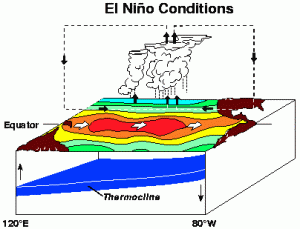
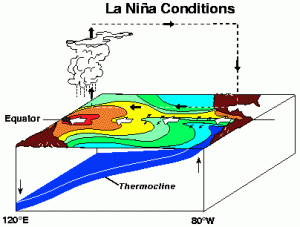
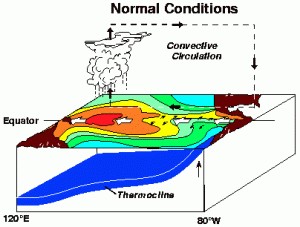
Strong El Niño cycles are ones in which upwelling rates are lower than average, causing higher surface temperatures and reduced nutrient recycling to surface waters (where the overwhelming majority of marine life exists). This is really bad news for marine autotrophs and corals if El Niño is particularly severe or persists longer than average, since these organisms are adapted to very specific temperatures and nutrient availability. During the intense 1998 El Niño cycle, which saw indices congruent to last year, an estimated 16% of global coral reef’s systems perished! (CORAL!!) Similarly, many of the marine microbes in the Southern Pacific are finely tuned to oceanic conditions. ENSO can alter them to favor or inhibit growth rates, resulting in a cascade of consequences for animals down the food chain.
Generally, the impact of El Niño or La Niña on typical weather forecasts is fairly mild and a loose prediction of upcoming weather can be expected. Climate change and ENSO are inexorably linked; there is strong evidence linking the increase of El Niño years and relative rise of global temperatures. Although politicians and climate change deniers in the U.S. often claim correctly that the year-to-year trends in national temperatures can increase or decrease annually, they misrepresent the facts. Not only are such fluctuations trending to higher temperatures, they are also increasing in amplitude (i.e. a hot year is hotter, and a cold year colder). The tables and graphs, believe me there are many, supporting this evidence argue that ENSO is both a side effect of climate change as well as an effector of it.
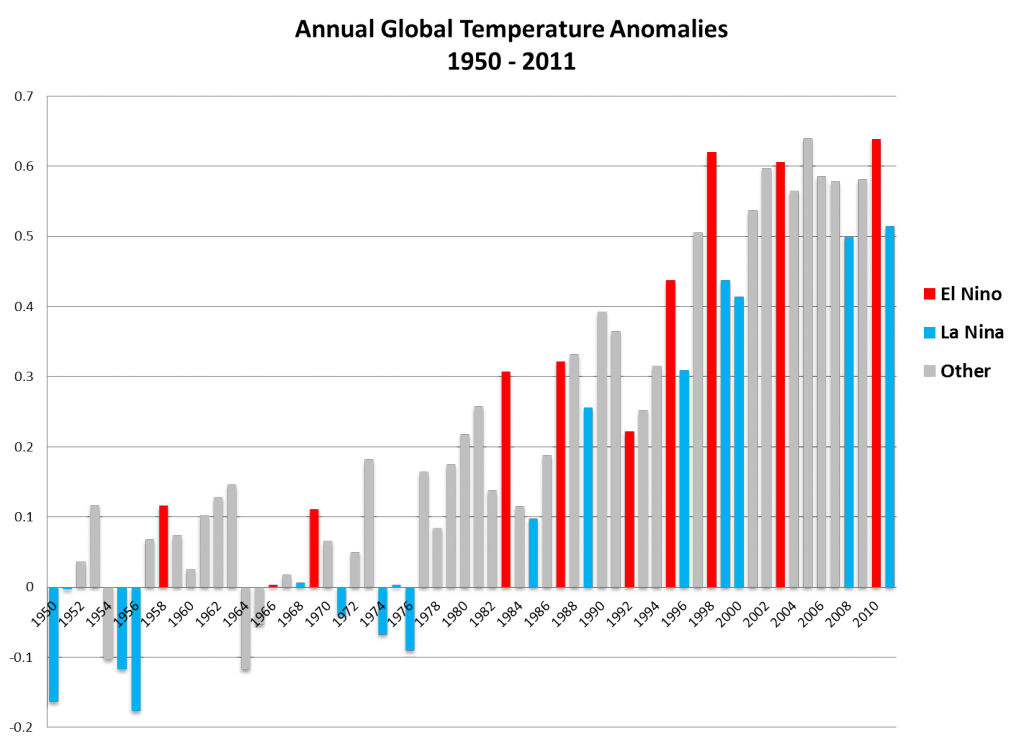
La Niña is Coming
For us here at UC San Diego, the last of the strong El Niño cycle means rain! Well, at least there is a weak correlation between SoCal precipitation and El Niño. As I said before, and to the travail of meteorologists the world over, NOAA’s definition of ENSO states models and data can only provide predictions for future systems. A countless number of factors, including mountains, transpiration rates, jetstreams, other pressure systems, rain dances, oceanic currents, and pollution, to name a few, all combine to affect the weather.
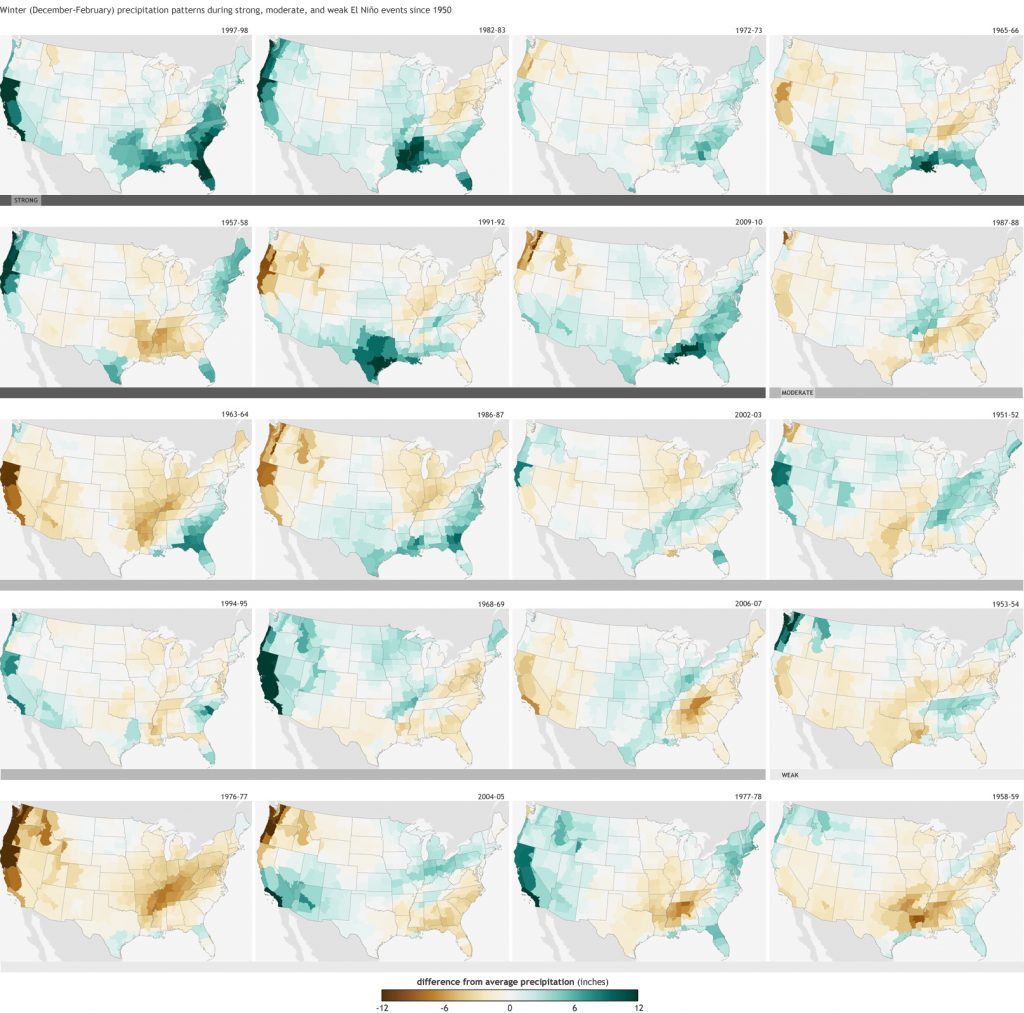
In fact, according to the Oceanic Niño Index (ONI), this last year (2015—2016) has experienced the strongest El Niño year in almost two decades, the effects of which (torrential rain and wind) we are still experiencing as we transition to a predicted La Niña cycle. For those of you allergic to rain, there is good news! According to NOAA’s Climate Prediction Center, La Niña conditions are currently present within equatorial sea surface temperatures and a transition to ENSO-neutral climate is expected to occur by February 2017, meaning less rain and warmer temperatures than last year’s.
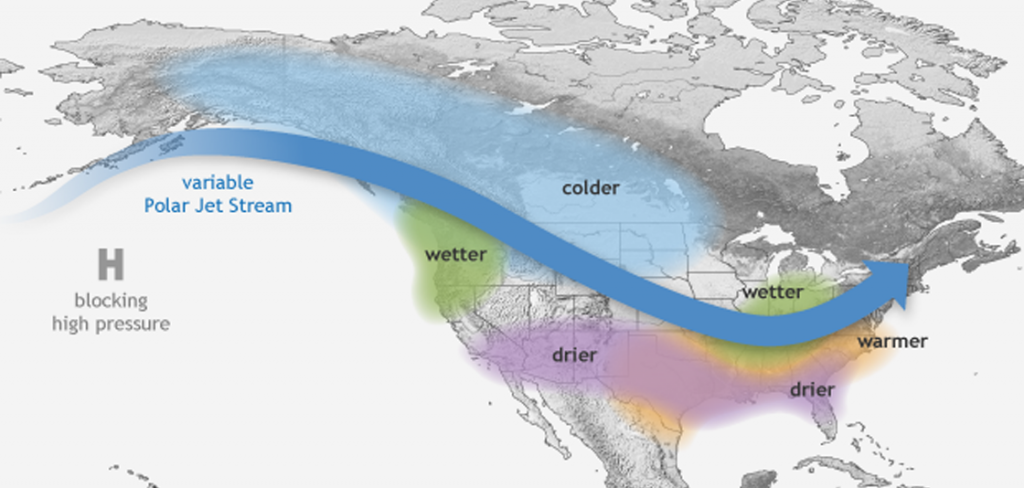
However, before we say “so long” to our rainy days, I should remind you that over 50% of California is still in a drought, with San Diego County still exhibiting “extreme drought” conditions. In order to alleviate the drought in California, we must hope for ENSO-neutral or weak La Niña patterns to have consistent rain showers through the spring and fall (sorry sun-lovers).
Circling back to the benefits. Knowing what we know now about ENSO, we have the ability to expect a comprehensive outlook with regards to next season’s weather. Heck, if we keep our almanacs handy (I don’t leave home without mine), we could be making predictions like when Columbus anticipated a solar eclipse to convince Native Americans to give him food and power. With such resources as NOAA, ONI, and almanacs available to the public, I would think that, at the very least, politicians could make better predictions of global weather patterns to better serve the general public. I mean, come on, with the information that’s out there, one could make the best predictions–the best predictions you’ve ever seen.
[hr gap=”0″]
References and Further Reading:
Global Coral Bleaching Evidence
- Trenberth, K. E., J. M. Caron, D. P. Stepaniak, and S. Worley, Evolution of El Niño—Southern Oscillation and global atmospheric surface temperatures, J. Geophys. Res., 107(D8), doi:10.1029/2000JD000298, 2002.
Further predictions of ENSO patterns (February and beyond) look here
January NOAA Report
- http://www.cpc.ncep.noaa.gov/products/analysis_monitoring/lanina/enso_evolution-status-fcsts-web.pdf
ONI Nino severity index
Walker Circulation (Atmospheric Circulation Mechanism for ENSO)
